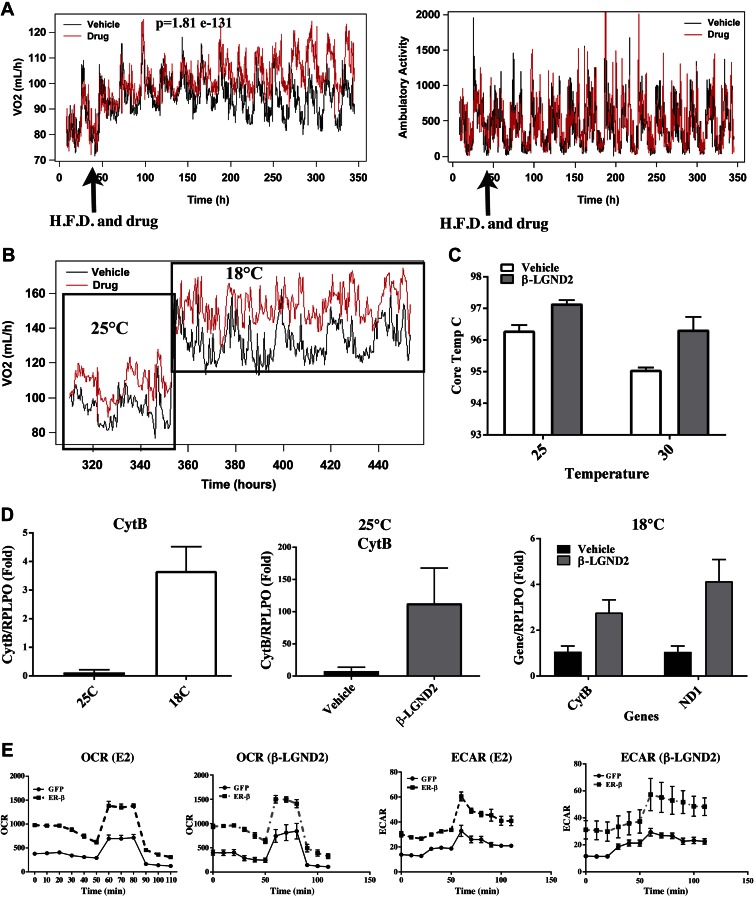Figure 5.
ER-β and its ligands increase oxygen consumption and mitochondrial respiration without increasing physical activity. A) Male C57BL6/J mice (6–8 wk old; n = 8 per group) fed with HFD and treated with vehicle or 30 mg/kg/d s.c. β-LGND2 were maintained in CLAMS at 25°C for entire duration of experiment. Volume of oxygen (left panel) and ambulatory activity (right panel) were measured constantly 24 h/d. HFD and drug treatment initiation time are indicated by arrow. B) Mice (n = 3 per group) described in A that were maintained at 25°C for first 15 d were exposed to cold (18°C) and continued to receive HFD and vehicle or β-LGND2 treatment. Volume of oxygen consumed was measured constantly 24 h/d. Cold exposure initiation is shown by arrow. C) Body core temperature of mice fed with HFD and treated with vehicle or β-LGND2 at 25°C and 30°C. D) Mitochondrial marker genes were up-regulated in WAT in animals maintained in cold and in animals treated with β-LGND2. RNA was isolated from WAT of animals shown in A and B. Expression of mitochondrial genes was measured using real-time PCR and normalized to large ribosomal protein (RPLPO). E) OCR and ECAR were increased by ER-β and its ligands. 3T3-L1 cells that were stably transfected with GFP or ER-β were seeded in Seahorse plates and were differentiated in presence or absence of 10 nM estradiol or 1 μM β-LGND2. Ten days after differentiation, mitochondrial respiration was measured with Seahorse Bioanalyzer (n = 4). All points on E in ER-β transfected cells were significantly different compared to GFP transfected cells. *P < 0.05 vs. ND; #P < 0.05 vs. HFD.

